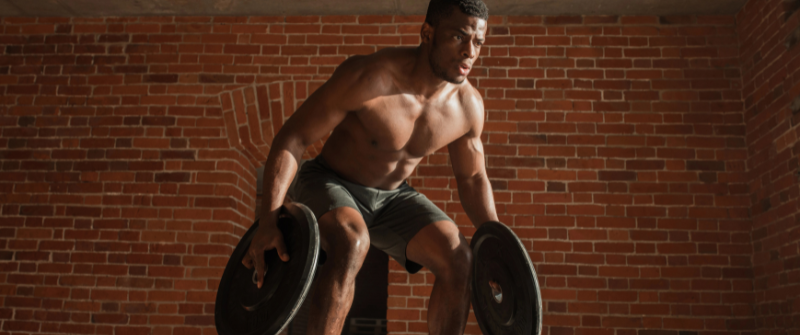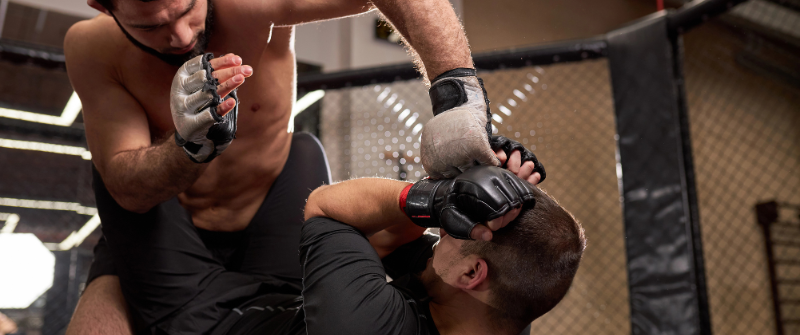.png)
- by NEXO Team
- July 26, 2024
Mitigating risks in martial arts gyms through effective training protocols and safety measures is crucial for creating a safe and conducive environment for participants. Whether practicing Jiu-Jitsu, Taekwondo, Karate, or any other martial art, implementing comprehensive strategies can significantly reduce the likelihood of injuries and enhance overall safety. Here’s an in-depth exploration of training protocols and safety measures to mitigate risks in martial arts gyms.
Importance of Risk Mitigation in Martial Arts Gyms
Martial arts training involves physical contact, dynamic movements, and varying intensity levels, all of which can pose risks if not managed properly. Injuries ranging from sprains and strains to more severe fractures and concussions can occur during training sessions. Effective risk mitigation minimizes these concerns, reduces operational and martial arts studio insurance expenses, and fosters a safe and supportive environment that promotes long-term participation and enjoyment for all practitioners.
Also Read: 8 Common Challenges Gym Operators Face
Training Protocols for Injury Prevention
1. Warm-Up and Cool-Down Routines
A proper warm-up and cool-down routine is essential to prepare the body for physical exertion and aid in recovery:
Dynamic warm-up: Engage in activities like jogging, jumping jacks, and dynamic stretches to increase blood flow and elevate heart rate gradually.
Technical warm-up: Perform martial arts-specific drills such as shadow boxing, footwork drills, or basic technique repetitions to prepare for the specific movements and techniques of the session.
Cool-down: Include static stretching and gentle movements to gradually reduce heart rate and promote muscle recovery.
2. Progressive Training Approach
Structured progression in training helps students develop skills safely and effectively:
Skill level divisions: Offer classes tailored to different skill levels (beginner, intermediate, advanced) to ensure that techniques are appropriate for each practitioner’s experience and capabilities.
Controlled sparring: Gradually introduce live sparring sessions with controlled intensity to allow students to apply techniques in a realistic setting while minimizing the risk of injury.
Technical emphasis: Focus on proper technique execution rather than sheer strength, promoting precision and control in movements.
3. Use of Protective Equipment
Appropriate protective gear can significantly reduce the risk of injuries during training:
Headgear: Protects against head injuries and concussions during sparring sessions.
Mouthguards: Safeguards teeth and reduces the risk of jaw injuries.
Shin guards: Minimizes impact injuries during striking and sparring.
Gloves: Provide hand and wrist protection during striking practices.
Ensuring that all participants wear and maintain their protective equipment properly enhances safety and reduces the severity of potential injuries.
Also Read: Transform Your Martial Arts Gym And Dance Studio With These Strategies
Safety Measures in Martial Arts Gyms
1. Proper Instruction and Supervision
Qualified instructors play a crucial role in maintaining safety standards and preventing injuries:
Certification and experience: Instructors should be certified in their respective martial arts disciplines and possess substantial teaching experience.
First aid training: Instructors should be trained in basic first aid and CPR to provide immediate assistance in case of injuries.
Supervision: Monitor students closely during training sessions to correct technique errors and prevent unsafe practices.
2. Safe Training Environment
The physical environment of the gym should be optimized for safety:
Quality mats: Use high-density, impact-absorbing mats to cushion falls and reduce the risk of impact injuries.
Cleanliness: Regularly clean mats, equipment, and facilities to prevent the spread of infections and maintain hygiene standards.
Space management: Ensure adequate space between training areas to minimize the risk of collisions during drills and sparring sessions.
Maintaining a clean and well-organized training environment enhances safety and reduces potential hazards.
Emphasis on Technique and Control
Promoting proper technique and control is essential in preventing injuries:
Technical instruction: Provide clear and detailed instruction on technique execution to ensure correct body mechanics and minimize the risk of strain or overexertion.
Controlled practice: Encourage students to practice with control and mindfulness, focusing on precision rather than force.
Feedback and correction: Provide regular feedback to students to correct technique errors promptly and prevent the development of bad habits.
Martial arts gyms can create a safer learning environment and reduce the incidence of injuries by emphasizing technique and control.
Also Read: How To Choose The Right Martial Arts Studio Insurance
Individual Needs and Limitations
 Recognizing and accommodating individual differences enhances safety and inclusivity:
Recognizing and accommodating individual differences enhances safety and inclusivity:
Fitness assessment: Conduct initial fitness assessments to tailor training programs to individual capabilities and limitations.
Modified techniques: Adapt techniques or drills for students with specific physical limitations or injuries to prevent exacerbation of existing conditions.
Open communication: Encourage students to communicate any discomfort or concerns during training to facilitate appropriate adjustments.
Addressing individual needs promotes participant safety and ensures that training programs are accessible and beneficial for all practitioners.
Emergency Preparedness and Risk Management
1. Emergency Procedures
Establishing clear protocols for handling emergencies is critical:
Emergency action plan: Develop and communicate protocols for responding to injuries, medical emergencies, or other critical incidents.
First aid kits: Ensure that well-stocked first-aid kits are readily accessible throughout the gym.
Emergency contacts: Maintain a list of emergency contacts, including local emergency services and medical facilities.
Prompt and effective emergency response minimizes the severity of injuries and demonstrates a commitment to participant safety.
2. Legal and Ethical Considerations
Adherence to legal and ethical standards is essential for risk management:
Liability waivers: Have participants sign liability waivers acknowledging the risks associated with martial arts training.
Martial arts studio insurance coverage: Maintain adequate liability insurance coverage to protect against potential claims and lawsuits.
Professional conduct: Uphold ethical behavior, respect for participants, and compliance with legal requirements to mitigate legal risks.
Compliance with legal and ethical standards enhances the credibility and trustworthiness of the martial arts gym while safeguarding against potential liabilities.
3. Reporting and Documentation
Accurate and thorough documentation supports risk management efforts:
Incident reports: Document details of any injuries, accidents, or near-misses that occur during training sessions.
Medical records: Maintain records of medical treatments provided to injured participants.
Review and analysis: Regularly review incident reports and data to identify trends, assess risks, and implement preventive measures.
Analyzing data and incident reports enables martial arts gyms to identify areas for improvement and implement targeted interventions to enhance safety.
Continuous Improvement and Evaluation
1. Feedback and Assessment
Soliciting feedback from participants and instructors is essential for continuous improvement:
Feedback mechanisms: Implement surveys, focus groups, or regular meetings to gather feedback on safety concerns and training experiences.
Instructor training: Provide ongoing training and professional development opportunities for instructors to stay updated on safety protocols and teaching methodologies.
Risk and martial arts studio insurance policy assessment: Conduct periodic risk assessments to identify emerging safety hazards and implement proactive measures.
By continuously evaluating and adapting safety protocols and practices, martial arts gyms can maintain a proactive approach to risk management and enhance overall safety.
Conclusion
Implementing effective training protocols and safety measures is essential for mitigating risks in martial arts gyms. By prioritizing injury prevention through structured warm-up routines, progressive training approaches, the use of protective equipment, proper instruction and supervision, creating a safe training environment, emphasizing technique and control, addressing individual needs, preparing for emergencies, adhering to legal and ethical standards, documenting incidents, and fostering continuous improvement, martial arts gyms can significantly reduce the likelihood of injuries and enhance participant safety.
Utilizing a comprehensive approach not only protects the well-being of practitioners but also supports the longevity and reputation of the gym. Moreover, it reduces overall martial arts studio insurance costs and promotes a positive training experience for all participants.
Categories
Fill out a short form to contact us with your questions or to receive a customized quote.
Recent Posts
-
 NEXO’s Affinity Program: How Fitness Suppliers and Associations Can Partner for Profit and Protection
December 5, 2025
NEXO’s Affinity Program: How Fitness Suppliers and Associations Can Partner for Profit and Protection
December 5, 2025 -
%20(1).png) How to Insure an MMA Gym Without Paying for Coverage You Don’t Need
December 5, 2025
How to Insure an MMA Gym Without Paying for Coverage You Don’t Need
December 5, 2025 -
 Mastering Liability for Jiu-Jitsu Tournaments and Martial Arts Events
December 5, 2025
Mastering Liability for Jiu-Jitsu Tournaments and Martial Arts Events
December 5, 2025 -
 From Zen to Zoning: What Every Yoga and Pilates Studio Owner Should Know Before Signing a Lease
December 5, 2025
From Zen to Zoning: What Every Yoga and Pilates Studio Owner Should Know Before Signing a Lease
December 5, 2025 -
%20(1).png) Why Your Referral & Loyalty Program Can Impact Your Insurance Rates
December 5, 2025
Why Your Referral & Loyalty Program Can Impact Your Insurance Rates
December 5, 2025

